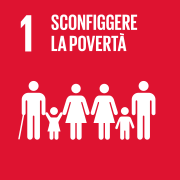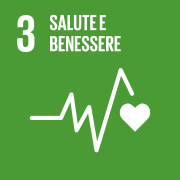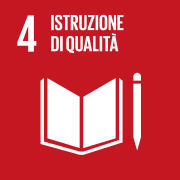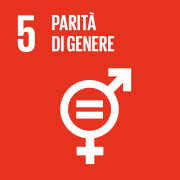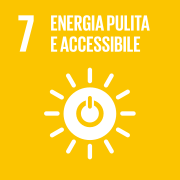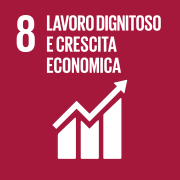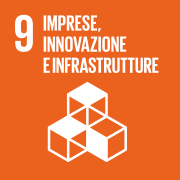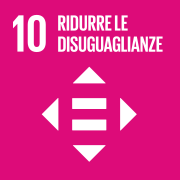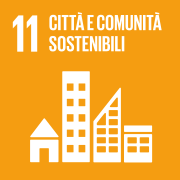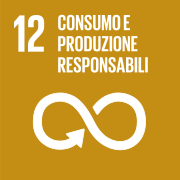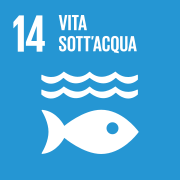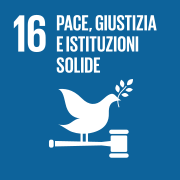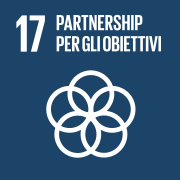
Why conspiracists reject science convinced that the world is dominated by secret criminal organisations. And how they obstruct the path to sustainability.
You meet someone who, after some small talk, whispers in your ear: ‘Don’t believe in vaccines, they are just a trick to implant microchips in our bodies!’ Or: “Did you know that the Earth is flat and that governments are hiding it from us?”. Sounds like surreal dialogue, doesn’t it? Yet, these and other conspiracy theories find supporters all over the world. But who are the conspiracists, why do they reject science and what makes them believe in scenarios that are as fascinating as they are improbable?
Identikit of the Conspirator
Conspiracists, or conspiracists, are people who are convinced that behind every major world event or decision there is a secret criminal organisation pulling the strings of history. According to them, nothing is random, everything is premeditated. And this organisation is not only extremely powerful, but also manages to hide the truth from all but a handful of ‘enlightened’ individuals (guess who?).
But how does one arrive at this kind of belief? There is no single profile of the conspiracist. Some are ordinary people, who work and have families; others may be highly educated individuals, sometimes even experts in a particular field of knowledge. However, a common characteristic is a deep distrust of institutions, which includes governments, the media and science: especially technology and medicine.
How do they reason and why do they reject science?
Conspiracy reasoning assumes that official information is all part of a grand deception. For them, scientists, journalists and politicians are nothing more than pawns manipulated by a secret caste plotting in the shadows.
This worldview is often fuelled by a sense of powerlessness or alienation, which drives people to seek alternative explanations for phenomena that are complex, frightening or simply not understandable.
Science, with its method based on evidence, experiments and independent verification, poses a direct threat to this worldview. Why? Because science is based on the principle that the world is complex and chaotic. But plotters find their inner comfort in the idea that there is a hidden order behind everything, even if this order is deeply evil.
What do they fear?
Conspiracists fear not only the unknown but, above all, the idea that there is no one at the wheel of the world. For them, it is more reassuring to believe that there is a plan, albeit an obscure one, than to accept that everything is governed by uncertainty. This leads them to see conspiracies everywhere.
Take the case of the terraplatters. Despite all the evidence that proves the sphericity of the Earth (from satellite images to physics experiments to the trivial observation of the curvature of the horizon), the terraplasticists are convinced that we live on a flat disc and that space agencies, airlines, scientists, institutions, governments, are involved in a gigantic conspiracy to hide it.
Another example is QAnon, a movement born in the United States that claims the existence of a global elite that practices satanic rituals and traffics children. According to the followers of QAnon, only Donald Trump can stop this dark evil.
Conspiracies so gigantic that – in order to remain standing – they progressively include practically all ‘others’: for conspiracists, reality is too complex to be accepted, so they reduce it to a simpler explanation, even if it is completely unfounded.
No-vax: when fear becomes dangerous
Among conspiracy theories, perhaps one of the most damaging is that of the no-vax. Born in the late 18th century, they believe that vaccines are dangerous and part of a secret plan to control population growth. This belief is dangerous because it not only endangers the lives of those who reject vaccines, but also undermines public health by endangering those who cannot immunise themselves for medical reasons.
During the COVID-19 pandemic, the no-vax movement found new life, spreading misinformation about vaccination campaigns and contributing to rejection in many communities.
This slowed down efforts to contain the virus, leading to more sickness and deaths. Even today, the no-vax people continue to support crackpot theories, despite scientific evidence proving the efficacy and safety of the vaccines in circulation.
Conspiracy profession
But what drives a person to become a plotter? Often, these people have a complicated relationship with study and culture. Some of them may have had school difficulties or negative experiences with authority, which led them to develop antisociality and a deep distrust of institutions. Others, on the other hand, may be highly educated individuals, but with an education that has led them to specialise in a limited field of knowledge to the detriment of a broader and more critical outlook.
These individuals tend to surround themselves with like-minded people, creating a kind of ‘echo chamber’ in which every belief is reinforced and amplified. Their distrust of official sources leads them to look for alternative information on unreliable websites, blogs, social media and communities, where they find only like-minded people and thus only confirmation of their prejudices.
Psychological mechanisms
Complex psychological mechanisms are also hidden behind conspiracy behaviour. One of the most powerful is the ‘confirmation bias’, i.e. the tendency to seek out and interpret information in a way that confirms one’s pre-existing beliefs. A conspiracist does not try to verify the authenticity of his sources, rather he only selects information that confirms what he already believes.
The seed of conspiracy lurks easily in personalities suffering from paranoid personality disorder. Many plotters have a paranoid view of the world, in which everything that happens is seen as part of a larger, malevolent plan. This leads them to see threats everywhere, even where there are none.
Often a plotter feels like a failure in society, or simply does not feel he has achieved the success he thinks he deserves. There is nothing better than to take refuge in a dystopian reality where he – and a few other heroes – are smarter than the others, have it all figured out and are fighting risking their lives to save humanity from huge evil empires.
But fear of chaos and uncertainty remains the key factor. Accepting that the world is complex, chaotic and, to a large extent, out of our control can be frightening. Believing in a global conspiracy, as disturbing as it is, offers a more reassuring explanation: there is a plan, and if there is a plan, there is also someone who is carrying it out in an organised way and therefore a specific enemy to blame and fight.
The most widespread conspiracies: from terrapattists to reptilians
Conspiracy theories are many and varied, some more widespread than others. Among the most difficult to understand, apart from the terraplatters, are those about the fake Moon landings. According to the latter theory, man never went to the Moon, and all the Apollo missions were allegedly faked by NASA to win the space race against the Soviet Union.
Despite overwhelming evidence to the contrary, this theory still has many followers: according to Roger Launius – former NASA chief historian – after 50 years, more than sixteen million Americans (5%) still believe that the six landings are all fakes. A 2021 poll at the basis of the TRESCA EU project on disinformation found that more than 25% of the respondents – sampled in seven European countries including Italy – are convinced that the first landing was filmed in a TV studio.
QA does not seem to have even more followers. Despite the total lack of evidence, more and more people have embraced this theory. Trump himself has thrown fuel on the fire by releasing over 800 pieces of social content from conspiracy affiliates. According to a PRRI survey, in March 2022, proselytes represented 18% of the US population: we are talking about sixty million people.
Another popular theory is that of the reptilians, according to which many world leaders are actually reptilian aliens disguised as humans, intent on dominating and exploiting the Earth for their own shady ends. This theory is so absurd that it sounds like a joke, but it has quite a following, fuelled by ‘revealing’ videos and pseudoscientific articles.
When distrust in science hinders progress
The problem with conspiracy theories is not only that they are false, but that they have real and dangerous consequences. When people start rejecting science and institutions, it creates a climate of distrust that can hinder progress and put public health at risk. Think of the damage caused by the no-vax pandemic, or the difficulty of fighting climate change when millions of people don’t even believe it is real.
This distrust in science also makes it more difficult to achieve the sustainable development goals set by Agenda 2030. If we fail to make everyone understand the importance of science and global cooperation, we risk jeopardising our future and that of generations to come.
How to converse with a conspiracist?
So, how can we build a dialogue with a conspiracist and help him out of the conspiracy spiral? First of all, it is important not to mock or attack his beliefs, however absurd they may seem: this would only reinforce his distrust. Instead, it is better to let him express himself, listen carefully and try to understand the origin of these beliefs and what fuels them.
Once a dialogue has been established, one can try to gradually introduce evidence-based information, encouraging the conspiracist to check sources and to think critically; always avoiding making our interlocutor feel frontally attacked. It is a slow process and not always successful, but it is one of the few ways to try to bring these people back to reality.
In conclusion, while conspiracy theories may seem fascinating, amusing or even grotesque, it is important to remember that they can have real and dangerous consequences. Science, with all its limitations, remains our best tool for understanding the world and improving our lives. And, precisely because the scientific method is constantly evolving and self-correcting, it is also able to cope with the challenges posed by conspiracy, provided we are willing to do our part in defending and promoting it.
